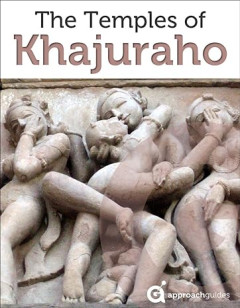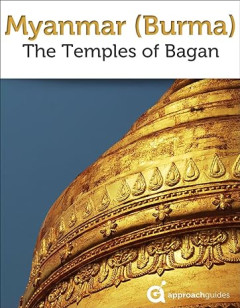Ditapis dengan
E-book Rereading Travellers to the East : Shaping Identities and Building the…
At least since the historiographical renewal brought about, among others, by the works of Franco Venturi (1973), the events of the century leading to the R isorgimento and the R isorgimento itself have been placed in the context of cultural exchanges involving European and extra-European intellectuals, trav-ellers, politicians and revolutionaries. In this historiographical…
- Edisi
- -
- ISBN/ISSN
- 9788855185790
- Deskripsi Fisik
- 234 hlm
- Judul Seri
- -
- No. Panggil
- 945 FAL r

E-book The Temples of Khajuraho
The magnificent 10th-12th century Hindu temples of Khajuraho — with their soaring towers and engaging sculptures — represent the pinnacle of the North Indian temple style. Still infused with their historical magic, they are yours to discover.
- Edisi
- -
- ISBN/ISSN
- -
- Deskripsi Fisik
- 26 halaman
- Judul Seri
- -
- No. Panggil
- 934 APP t
E-book Islamic Shangri-La : Inter-Asian Relations and Lhasa’s Muslim Commun…
In October 1936, the British Resident Frederick Chapman, or “Freddie” as he was known by his close associates, received an invitation to a game of soccer from a team calling themselves Lhasa United. The British Diplomatic Mission in Lhasa, unable to resist such a summons, hastily cobbled together a team of four British officials, four of their Sikkimese clerks, and a few of their …
- Edisi
- -
- ISBN/ISSN
- 9780520299733
- Deskripsi Fisik
- 260 hlm
- Judul Seri
- -
- No. Panggil
- 954.92 ATW i

E-book Myanmar (Burma): The Temples of Bagan
Bagan, the ancient Buddhist capital in central Myanmar (Burma) that thrived from 850-1300, is one of the most magnificent and inspiring sites in Southeast Asia. It is yours to uncover.
- Edisi
- -
- ISBN/ISSN
- -
- Deskripsi Fisik
- 37 halaman
- Judul Seri
- -
- No. Panggil
- 959.1 APP m

E-book Thailand: Temples of Bangkok, Sukhothai & Ayutthaya
The temples of Thailand — overflowing with golden Buddhas, soaring spires and glistening surfaces of infinite complexity — stir the spirit, inviting contemplation and wonder. This Approach Guide reveals the country’s best art and architecture from its three great historical capitals: Sukhothai (1238-1368), Ayutthaya (1350-1767), and Bangkok (1782-present). It is yours to discover.
- Edisi
- -
- ISBN/ISSN
- -
- Deskripsi Fisik
- 52 halaman
- Judul Seri
- -
- No. Panggil
- 959.3 APP t

E-book Vietnam Revealed: The Royal Tombs of Hue
A fantastic collection of royal tombs sits solemnly along the banks of the Perfume river, upstream of Hue to the southwest. They were built by the Nguyen dynasty — which ruled over a unified Vietnam from 1802-1945 — to maintain their legacy for ages to come. Named a UNESCO World Heritage Site in 1993, the tombs inspire with their perfectly-integrated natural surroundings, captivating dragon…
- Edisi
- -
- ISBN/ISSN
- -
- Deskripsi Fisik
- 46 halaman
- Judul Seri
- -
- No. Panggil
- 959.7 APP v

E-book Cambodia: Temples of Angkor
With insightful profiles for 23 of Angkor's top temples and nearly 200 high-resolution images, this is the definitive travel guide to Angkor, Cambodia's premier World Heritage destination. Angkor — the capital of the Khmer empire that thrived for 500 years from 802-1327 — is one of the most magnificent sites in Southeast Asia. The ancient city’s temples inspire with their innovative ar…
- Edisi
- -
- ISBN/ISSN
- -
- Deskripsi Fisik
- 55 halaman
- Judul Seri
- -
- No. Panggil
- 959.6 APP c
E-book Connecting Territories : Exploring People and Nature, 1700–1850
The final decades of the 18th century became a crucial period for the differ-ent fields of natural history and related disciplines of ethnology and archaeol-ogy, as academic subjects in light of the advancement of Linnaean systematic classification in botany and zoology.5 The perception and systematization of the natural world went through a paradigmatic shift as a result. Collections and the p…
- Edisi
- -
- ISBN/ISSN
- 9789004412477
- Deskripsi Fisik
- 279 hlm
- Judul Seri
- -
- No. Panggil
- 508 BAU c
E-book Curious Encounters : Voyaging, Collecting, and Making Knowledge in the…
Our histories of global exploration and encounter in the long eigh-teenth century are often drawn from the scientific voyages of discovery and their richly illustrated books, like John Ross’s A Voyage of Discovery(1819). Ross voyaged in the Enlightenment tradition of Bougainville and Cook, who had returned to Europe in ships laden with knowledge in the form …
- Edisi
- -
- ISBN/ISSN
- 9781487503673
- Deskripsi Fisik
- 255 hlm
- Judul Seri
- -
- No. Panggil
- 909.81 BRA c

E-book India: The Ancient Past: A History of the Indian Sub-Continent from c.…
This carefully crafted study presents the fascinating story of the development and establishment of India’s culture and civilization from early pre-history through to the early second millennium. Encompassing topics such as the Harappan Civilization, the rise of Hindu culture, the influx of Islam in the eighth and the eleventh/twelfth centuries and key empires, states and dynasties, India:…
- Edisi
- -
- ISBN/ISSN
- 9780415356169
- Deskripsi Fisik
- 303 halaman
- Judul Seri
- -
- No. Panggil
- 934 AVA i
 Karya Umum
Karya Umum  Filsafat
Filsafat  Agama
Agama  Ilmu-ilmu Sosial
Ilmu-ilmu Sosial  Bahasa
Bahasa  Ilmu-ilmu Murni
Ilmu-ilmu Murni  Ilmu-ilmu Terapan
Ilmu-ilmu Terapan  Kesenian, Hiburan, dan Olahraga
Kesenian, Hiburan, dan Olahraga  Kesusastraan
Kesusastraan  Geografi dan Sejarah
Geografi dan Sejarah